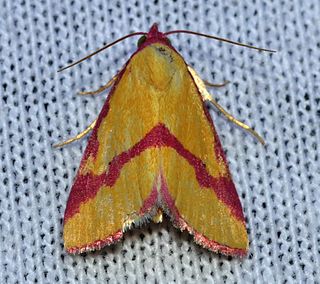
The Australian Open is a tennis tournament held annually at Melbourne Park in Melbourne, Victoria, Australia. The tournament is the first of the four Grand Slam tennis events held each year, preceding the French Open, Wimbledon and the US Open. The Australian Open starts in the middle of January and continues for two weeks coinciding with the Australia Day holiday. It features men's and women's singles; men's, women's and mixed doubles; junior's championships; and wheelchair, legends and exhibition events. Until 1987, it was played on grass courts, but since then three types of hardcourt surfaces have been used: green-coloured Rebound Ace up to 2007 and blue Plexicushion from 2008 to 2019. Since 2020, it has been played on blue GreenSet.

The azure hawker is one of the smaller species of hawker dragonflies,. The flight period is from late May to August

Australia, officially the Commonwealth of Australia, is a country comprising the mainland of the Australian continent, the island of Tasmania, and numerous smaller islands. Australia is the largest country by area in Oceania and the world's sixth-largest country. Australia is the oldest, flattest, and driest inhabited continent, with the least fertile soils. It is a megadiverse country, and its size gives it a wide variety of landscapes and climates, with deserts in the centre, tropical rainforests in the north-east, tropical savannas in the north, and mountain ranges in the south-east.

The Calpinae are a subfamily of moths in the family Erebidae described by Jean Baptiste Boisduval in 1840. This subfamily includes many species of moths that have a pointed and barbed proboscis adapted to piercing the skins of fruit to feed on juice, and in the case of the several Calyptra species of vampire moths, to piercing the skins of mammals to feed on blood. The subfamily contains some large moths with wingspans longer than 5 cm (2 in).

Melbourne is the capital and most populous city of the Australian state of Victoria, and the second-most populous city in Australia, after Sydney. Its name generally refers to a 9,993 km2 (3,858 sq mi) metropolitan area also known as Greater Melbourne, comprising an urban agglomeration of 31 local municipalities, although the name is also used specifically for the local municipality of City of Melbourne based around its central business area.

Phytometra viridaria, the small purple-barred, is a moth of the family Erebidae. The species was first described by Carl Alexander Clerck in 1759. It is found in central and southern Europe, Mauritania, Morocco, Algeria, Tunisia, Armenia, Iraq, Iran, Afghanistan, Pakistan, and further east across the Palearctic to southern Siberia.

Phytometra is a genus of moths of the family Erebidae. The genus was described by Adrian Hardy Haworth in 1809.
Phytometra rhodarialis, the pink-bordered yellow, is a moth of the family Erebidae. The species was first described by Francis Walker in 1859. It is found from southern Ontario in Canada and Missouri and New Hampshire in the United States, south to Florida and Texas in the United States, possibly only as stray northward.
P. brassicae may refer to:

Phytometra duplicalis is a species of moth of the family Erebidae which is native to sub-Saharan Africa. It has been found in Cameroon, Sierra Leone, Zambia and South Africa.

Phytometra pentheus is a species of moth of the family Erebidae first described by James Farish Malcolm Fawcett in 1916. It is found in Eritrea and Somalia.

Phytometra silona is a species of moth of the family Erebidae described by William Schaus and W. G. Clements in 1893. It is found in Sierra Leone and in South Africa.
Phytometra ossea is a species of moth of the family Erebidae. This species is found in Madagascar.
Phytometra zotica is a species of moth of the family Erebidae. It is found in Madagascar.

The Boletobiinae are a subfamily of moths in the family Erebidae, containing about 956 species. The taxon was described by Achille Guenée in 1858.

Phytometra ernestinana, Ernestine's moth, is a species of moth of the family Erebidae. It is found in North America, where it has been recorded from Alabama, Arizona, Florida, Georgia, Illinois, Indiana, Iowa, Kansas, Louisiana, Michigan, Mississippi, New York, North Carolina, Ohio, Oklahoma, Ontario, South Carolina, Tennessee, Texas and Wisconsin. It is also present in Cuba.
Phytometra apicata is a moth in the family Erebidae described by William Barnes and James Halliday McDunnough in 1916. It is found in North America.
Phytometra orgiae is a species of moth in the family Erebidae. It is found in North America.
Phytometra obliqualis is a species of moth in the family Erebidae. It is found in North America.












